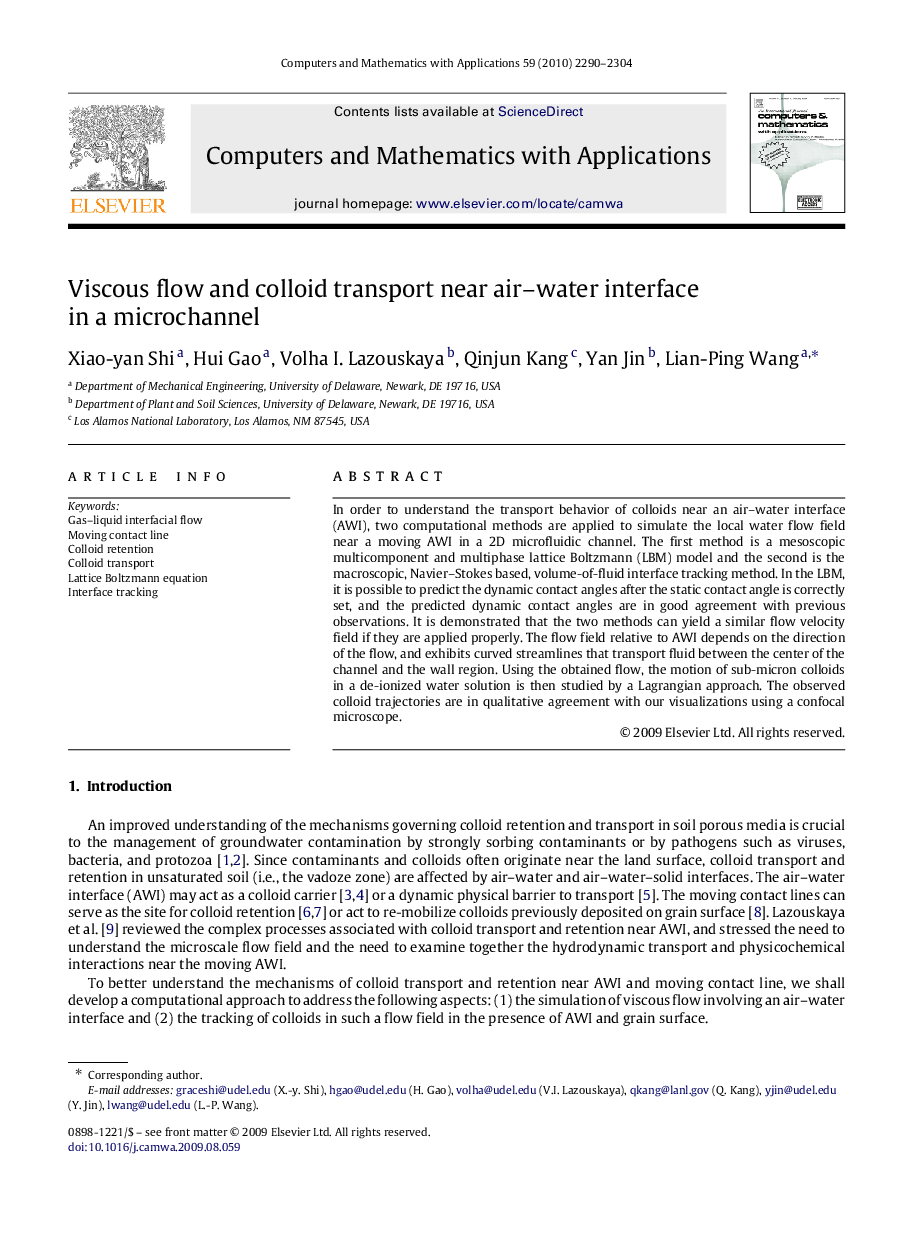| Article ID | Journal | Published Year | Pages | File Type |
|---|---|---|---|---|
| 473959 | Computers & Mathematics with Applications | 2010 | 15 Pages |
In order to understand the transport behavior of colloids near an air–water interface (AWI), two computational methods are applied to simulate the local water flow field near a moving AWI in a 2D microfluidic channel. The first method is a mesoscopic multicomponent and multiphase lattice Boltzmann (LBM) model and the second is the macroscopic, Navier–Stokes based, volume-of-fluid interface tracking method. In the LBM, it is possible to predict the dynamic contact angles after the static contact angle is correctly set, and the predicted dynamic contact angles are in good agreement with previous observations. It is demonstrated that the two methods can yield a similar flow velocity field if they are applied properly. The flow field relative to AWI depends on the direction of the flow, and exhibits curved streamlines that transport fluid between the center of the channel and the wall region. Using the obtained flow, the motion of sub-micron colloids in a de-ionized water solution is then studied by a Lagrangian approach. The observed colloid trajectories are in qualitative agreement with our visualizations using a confocal microscope.
